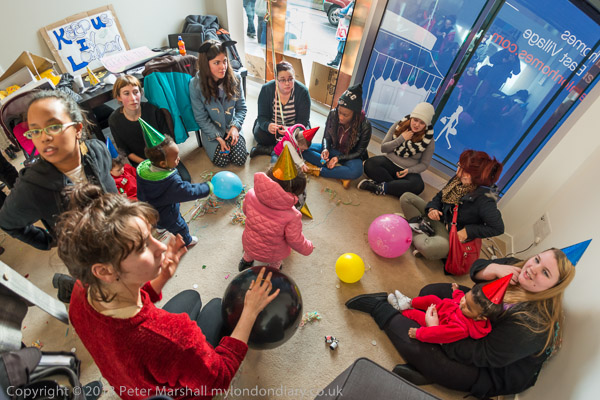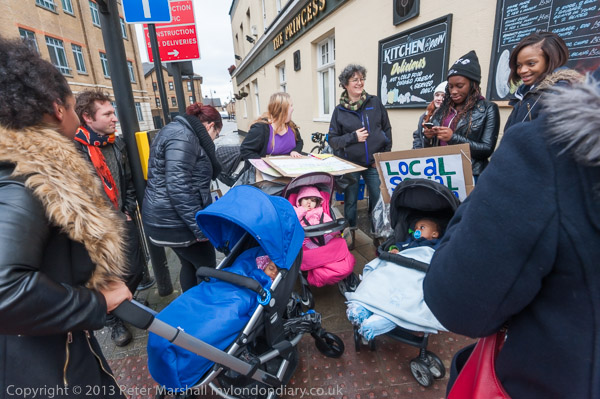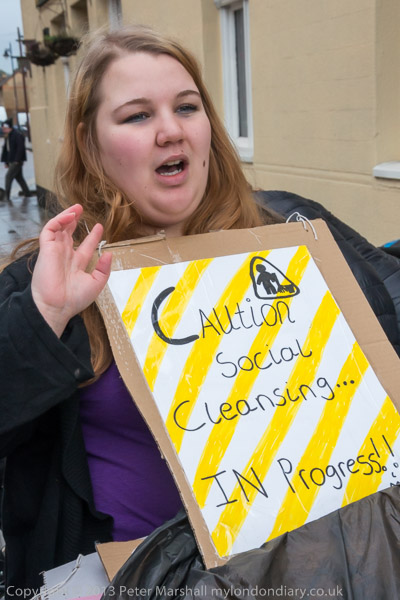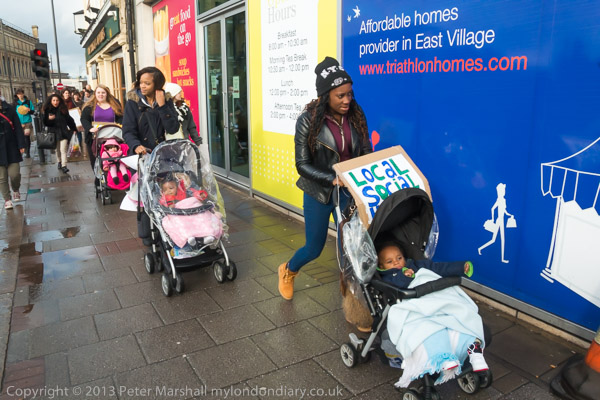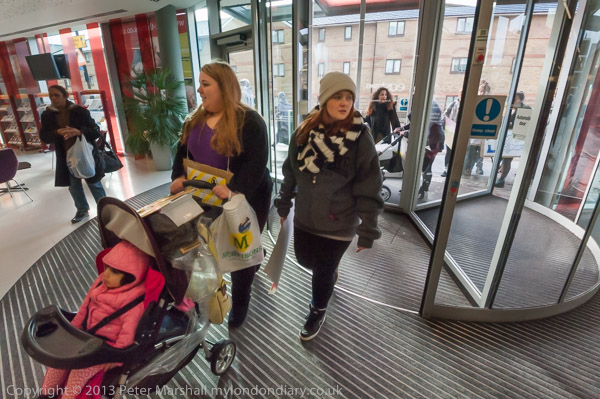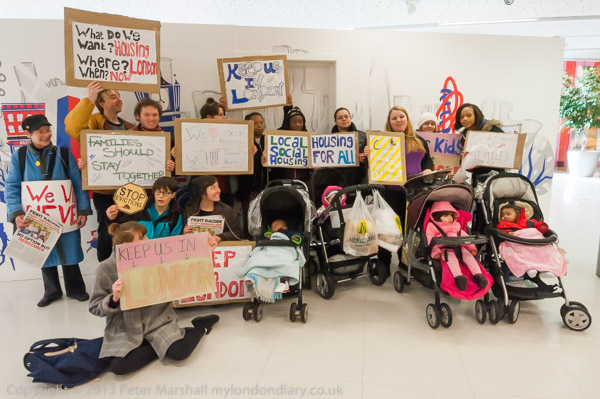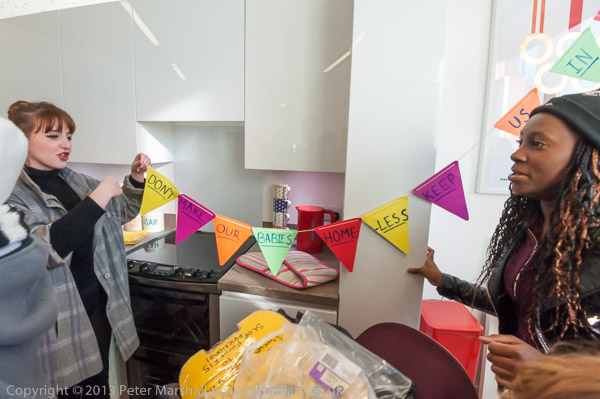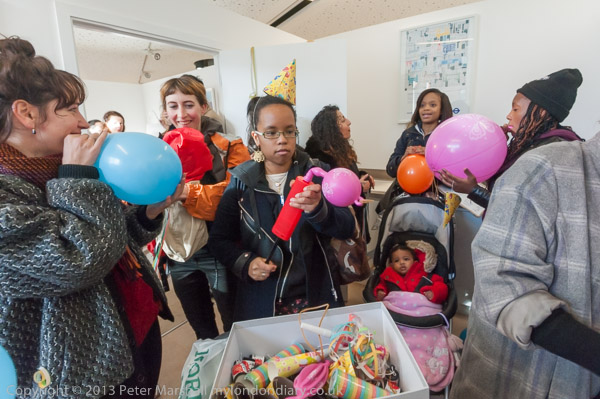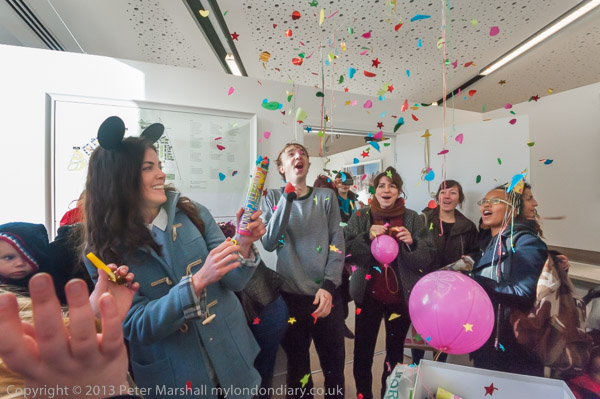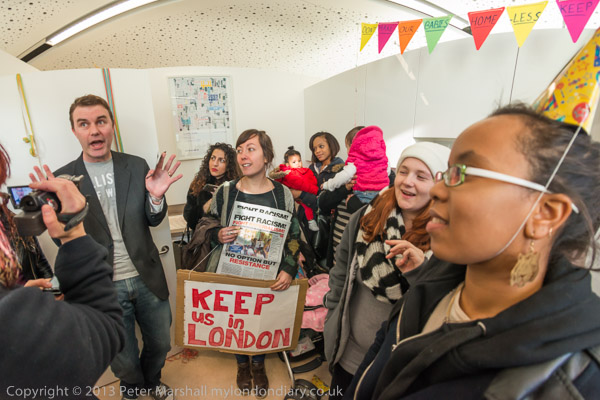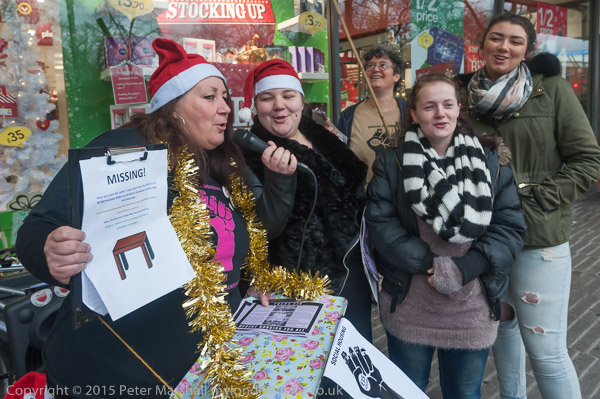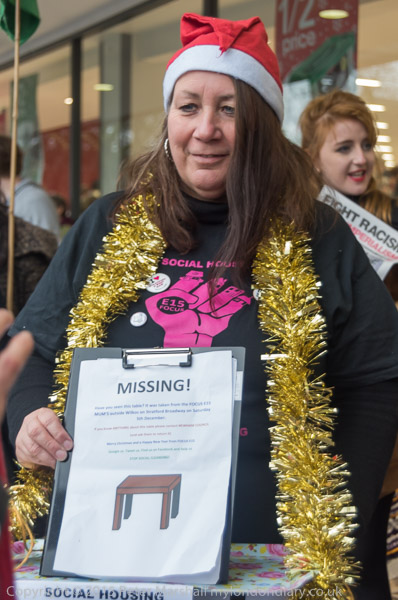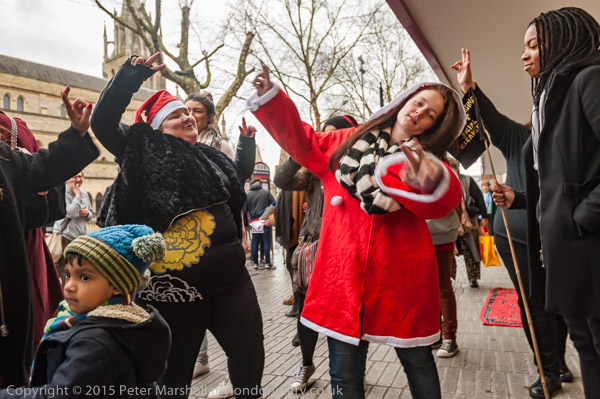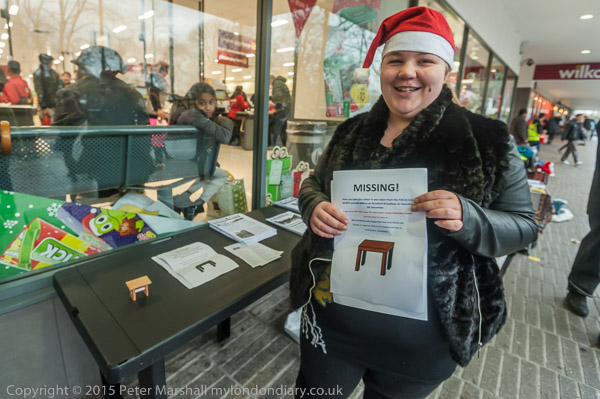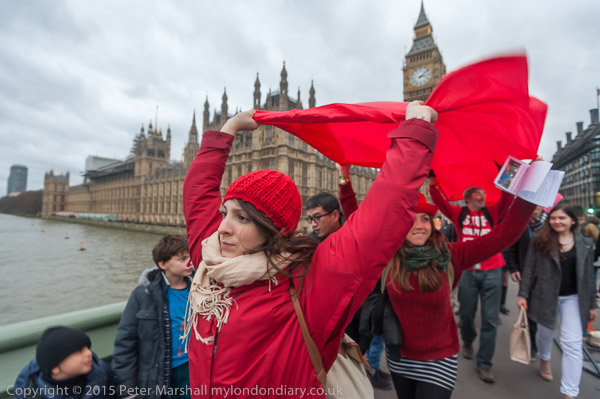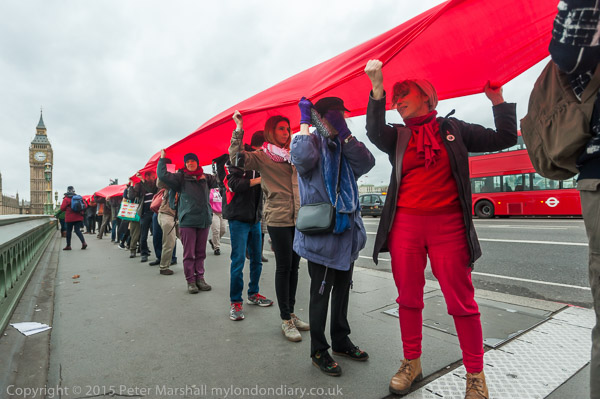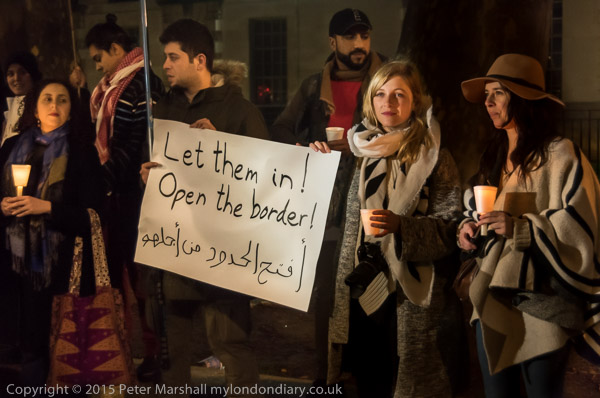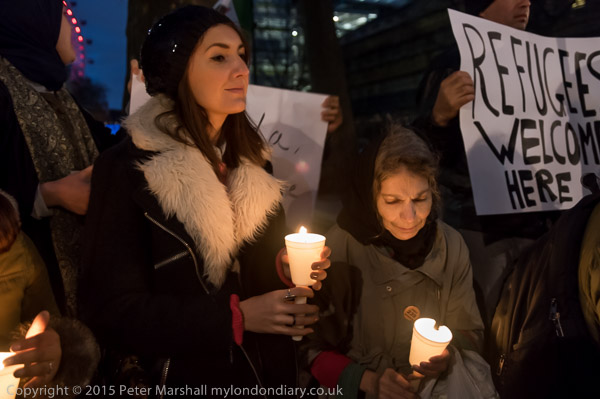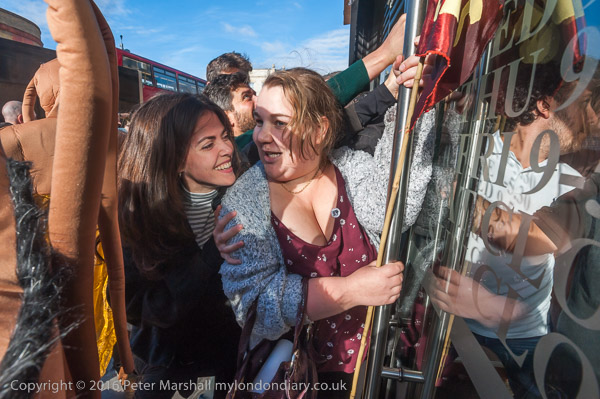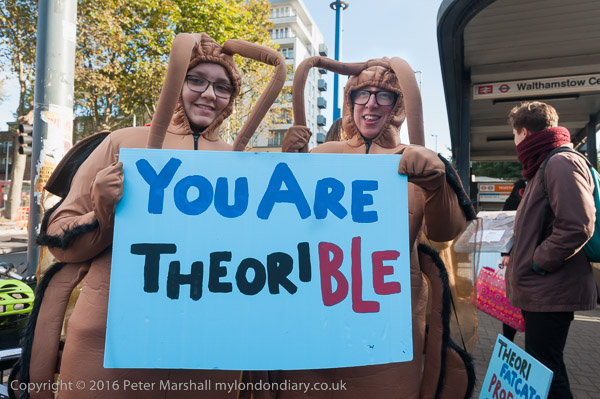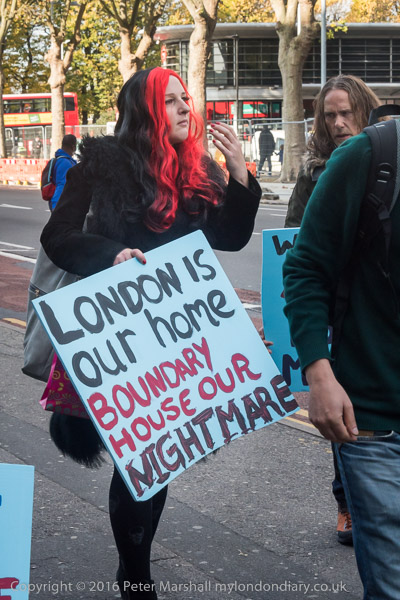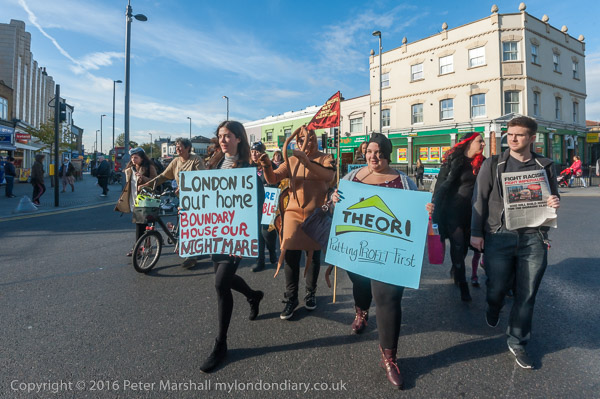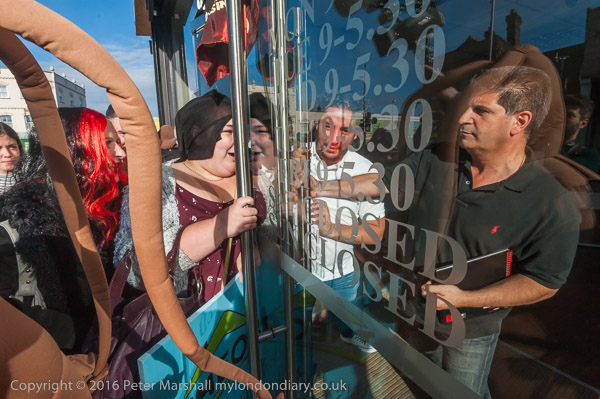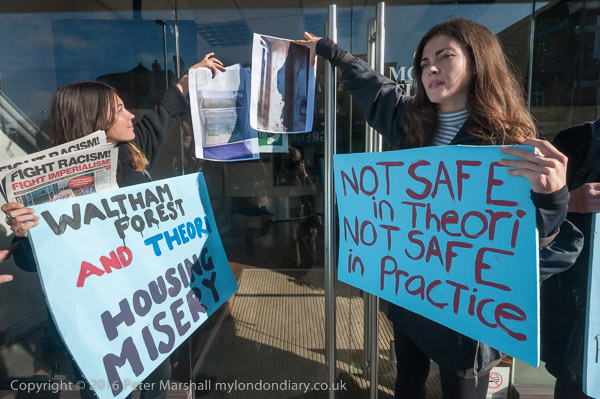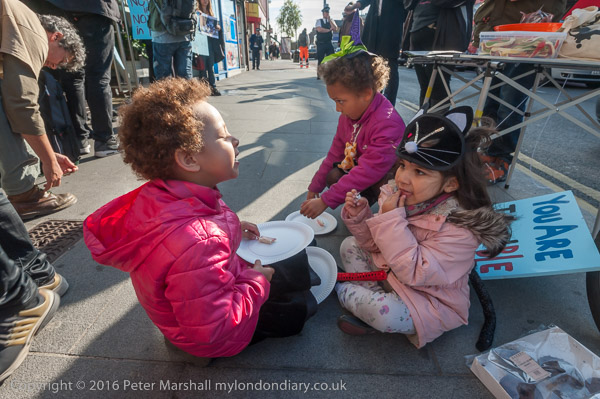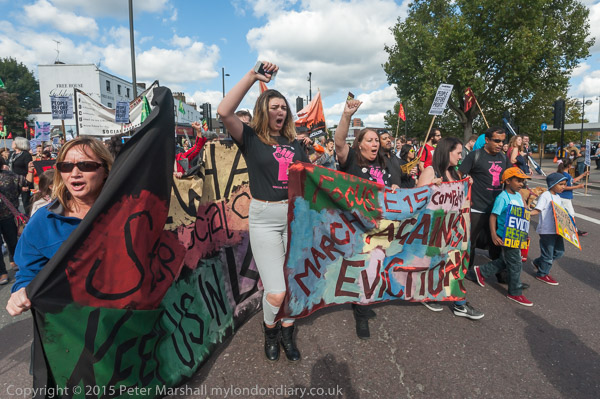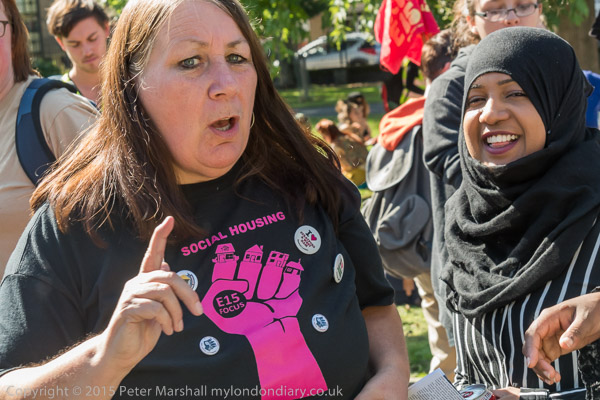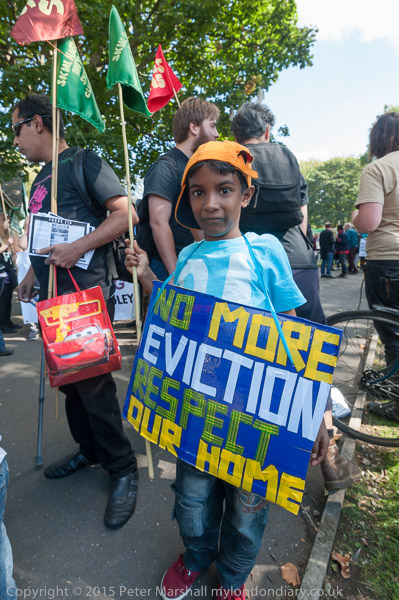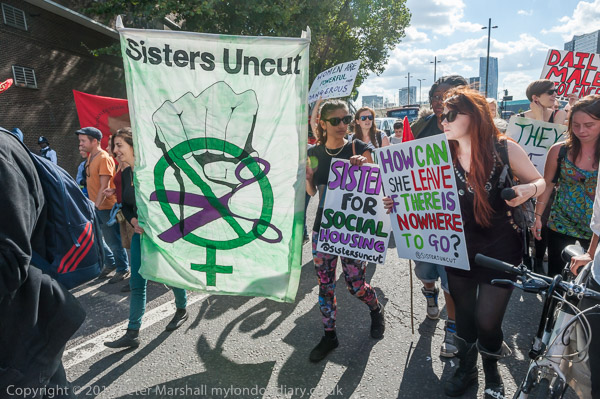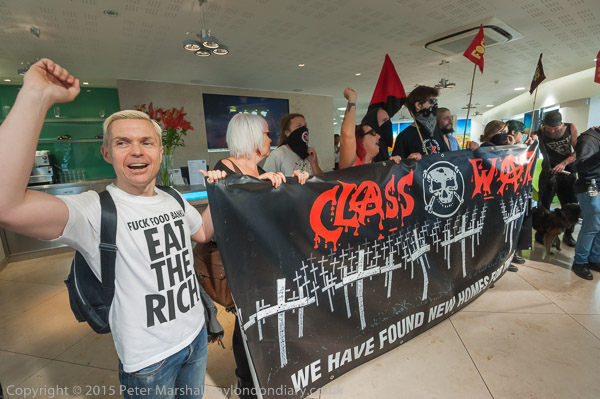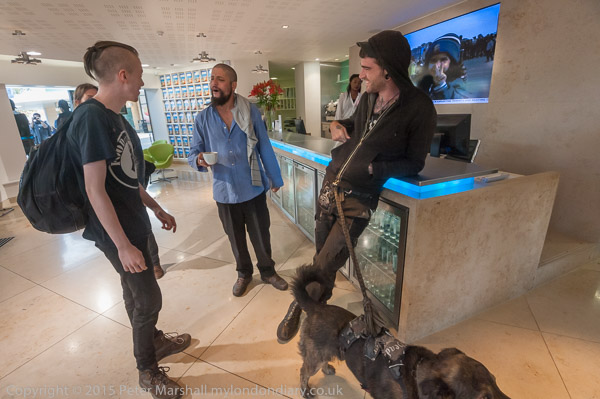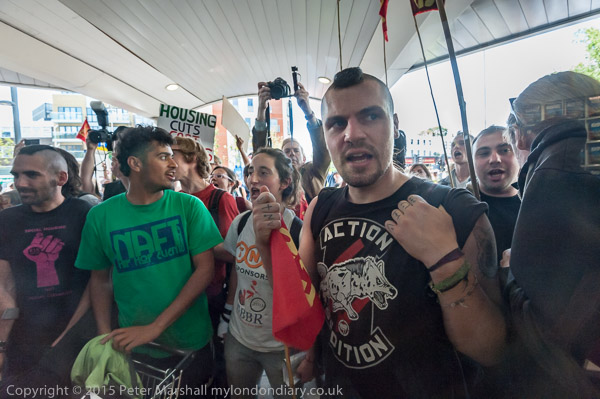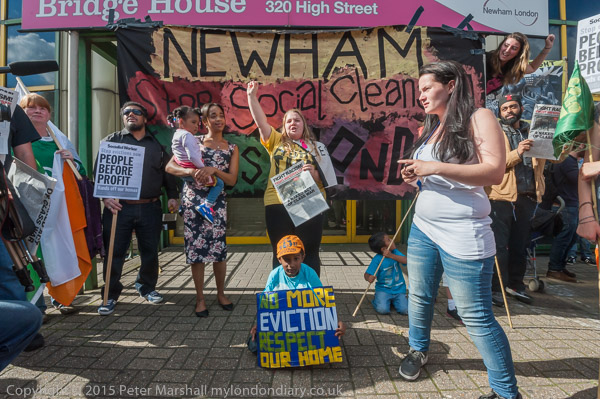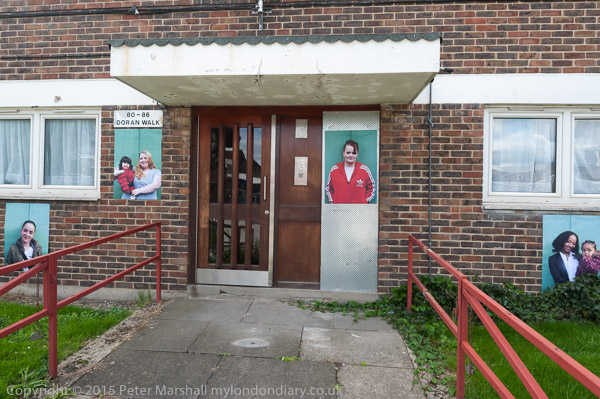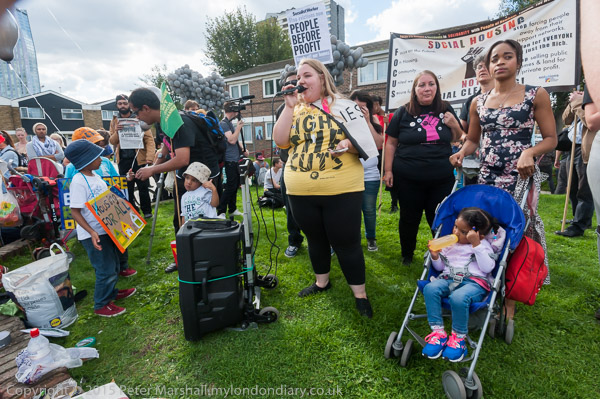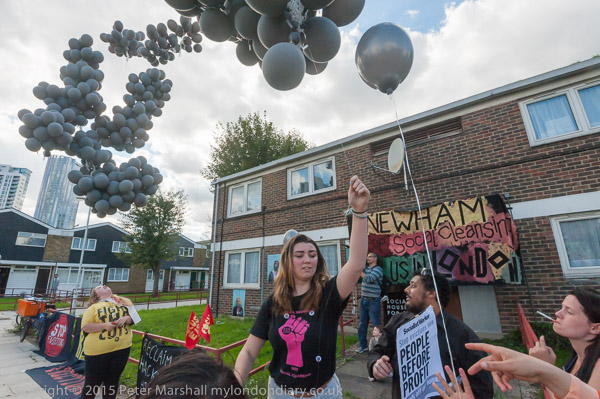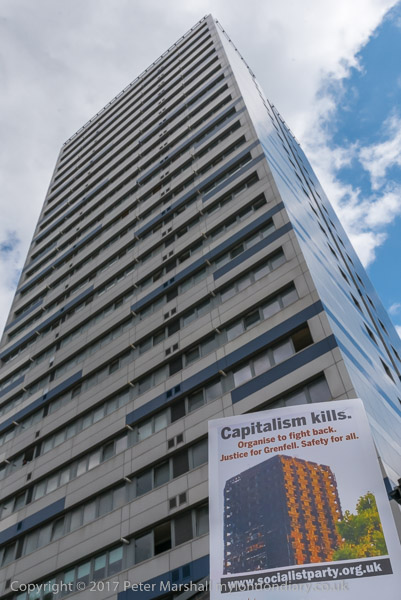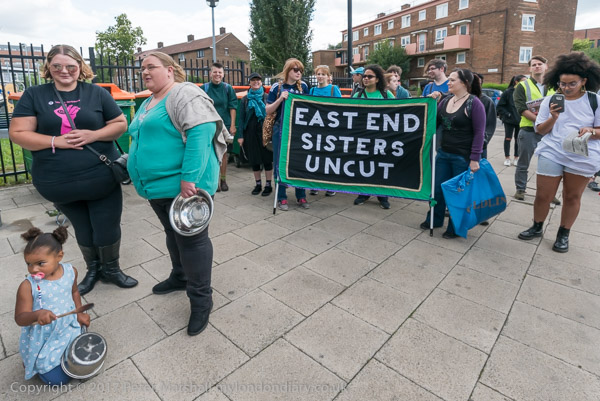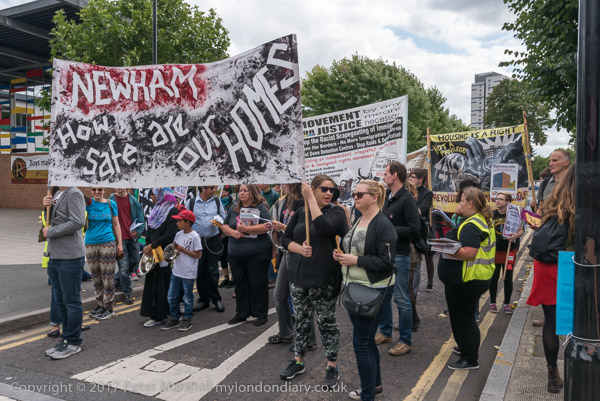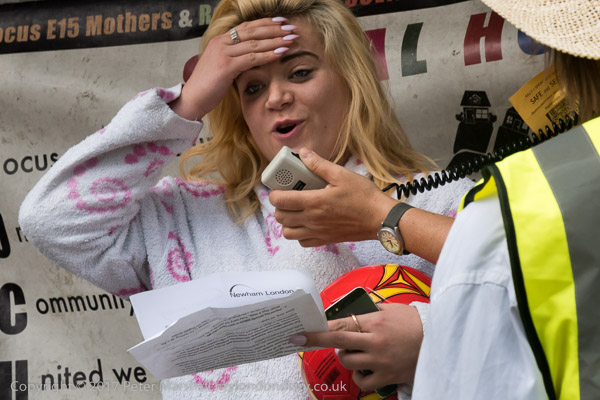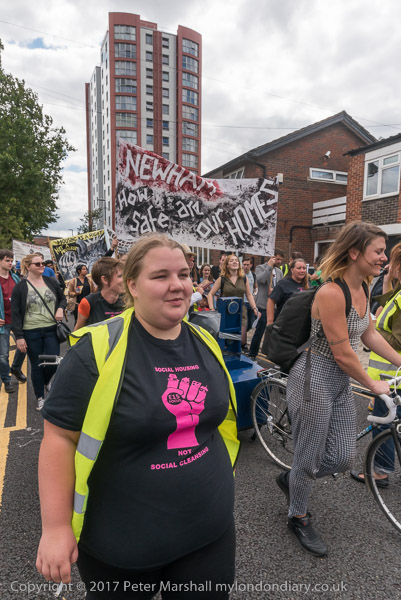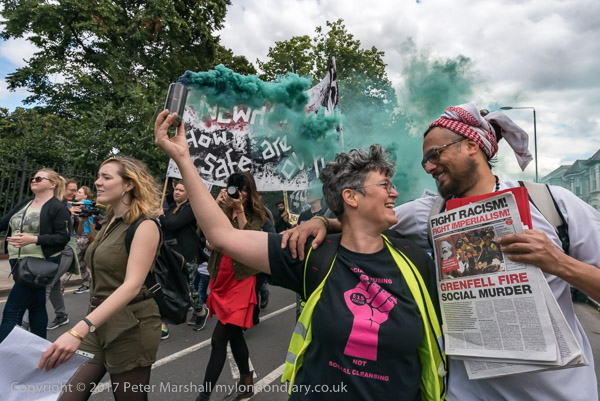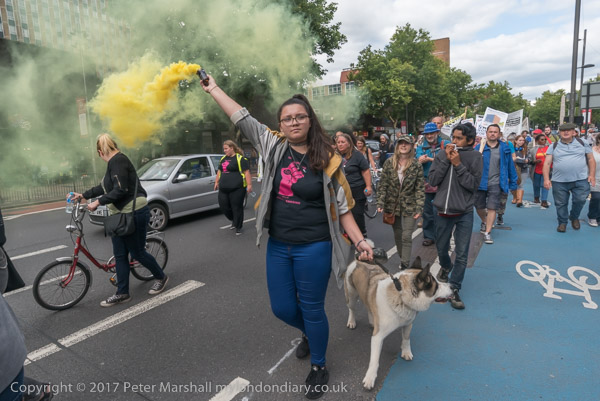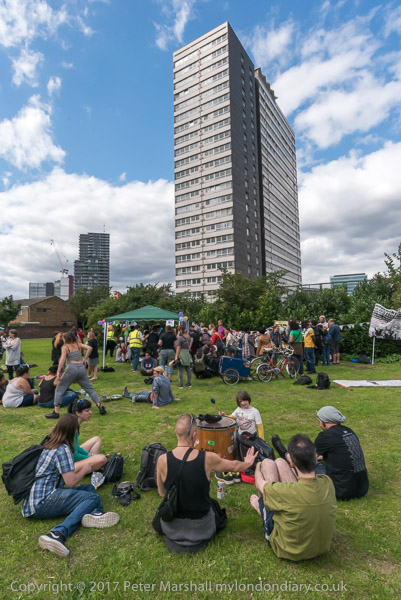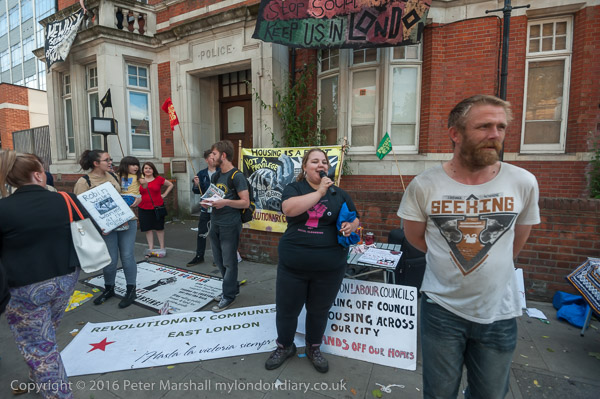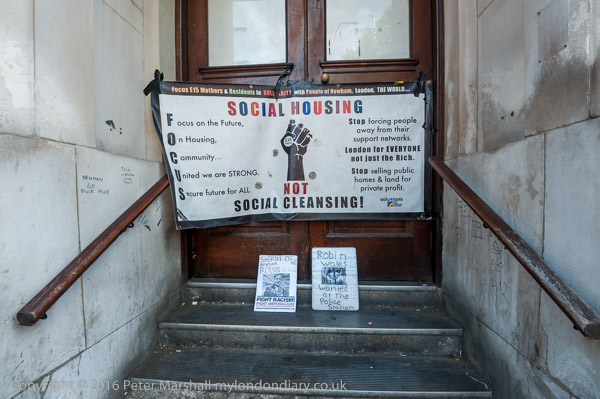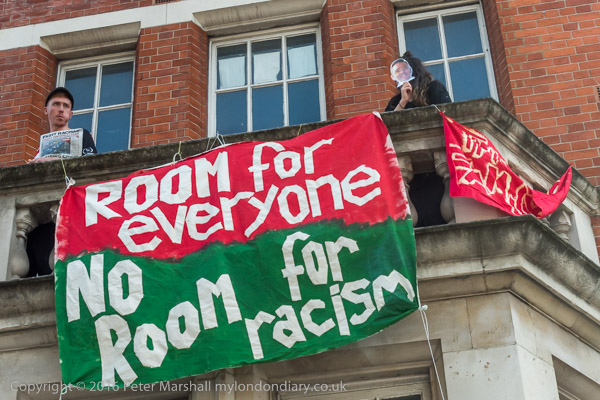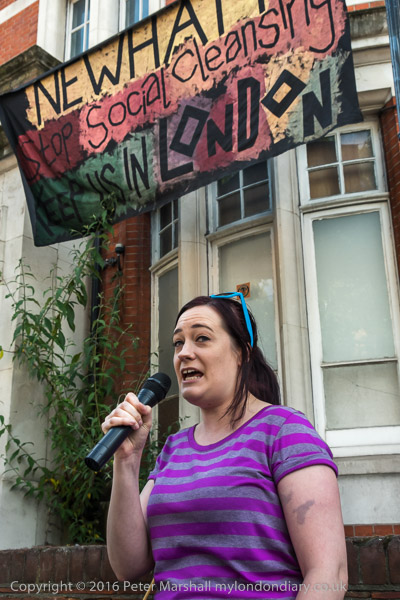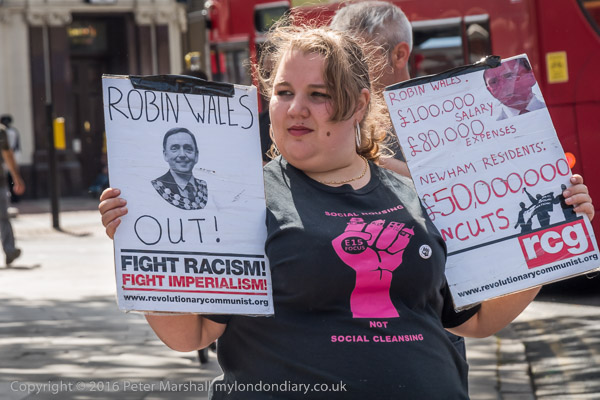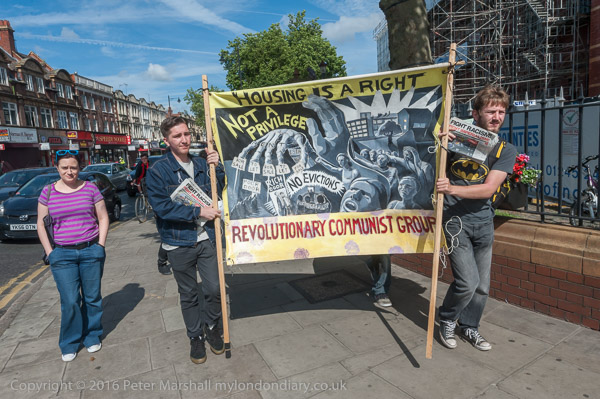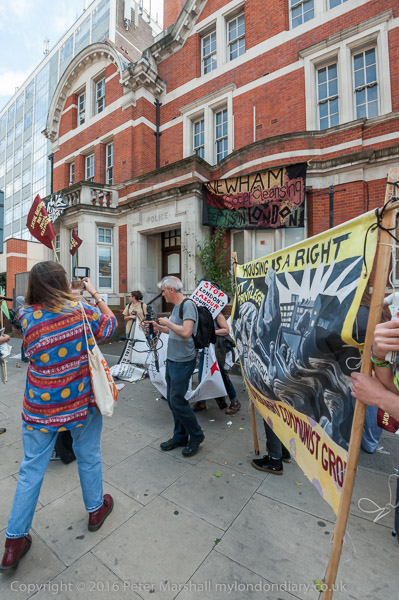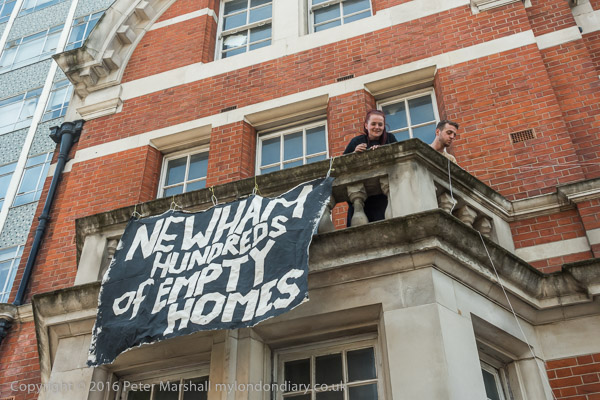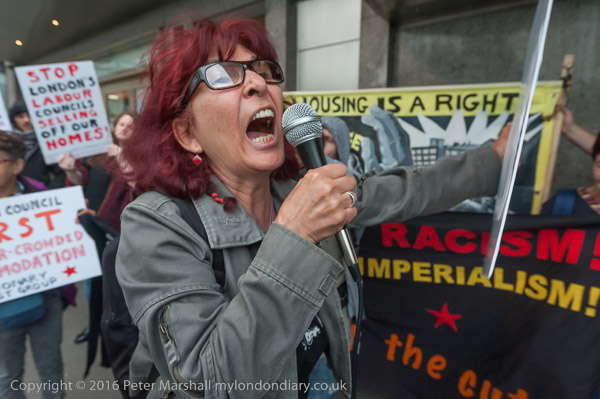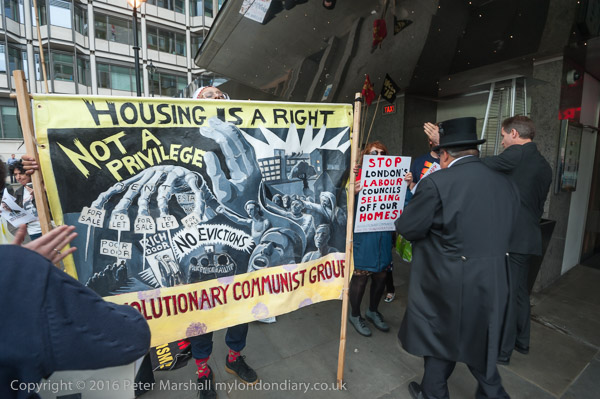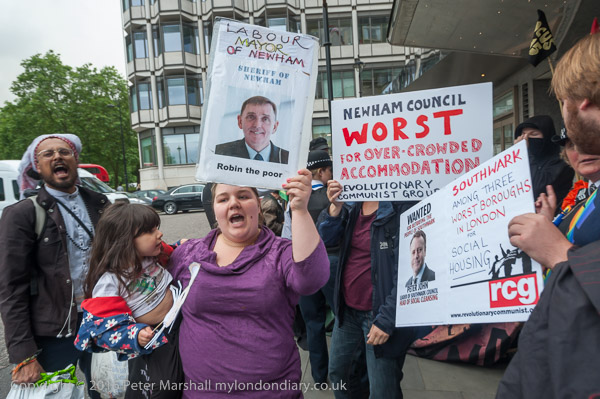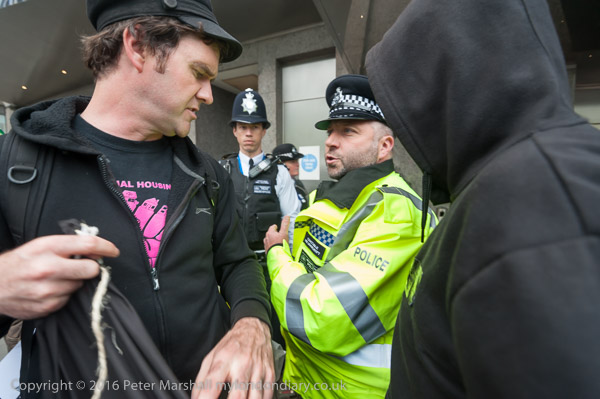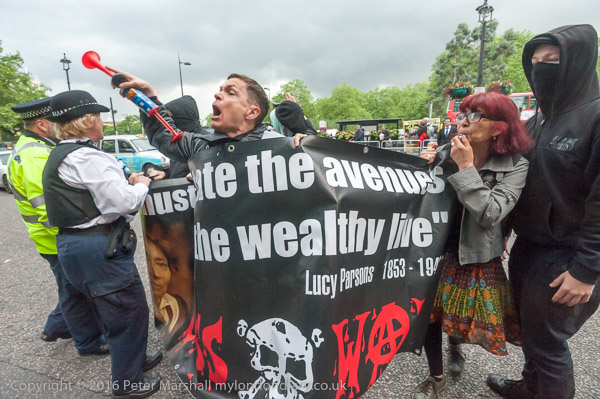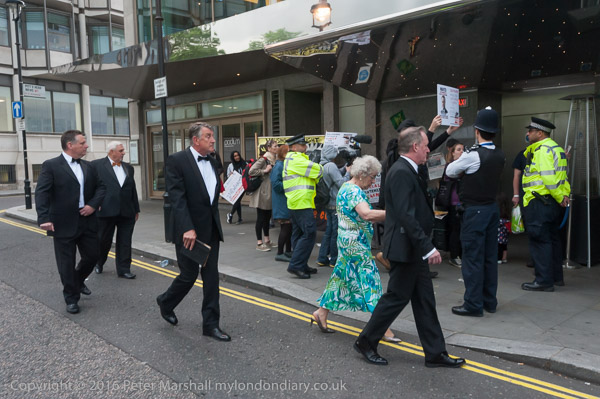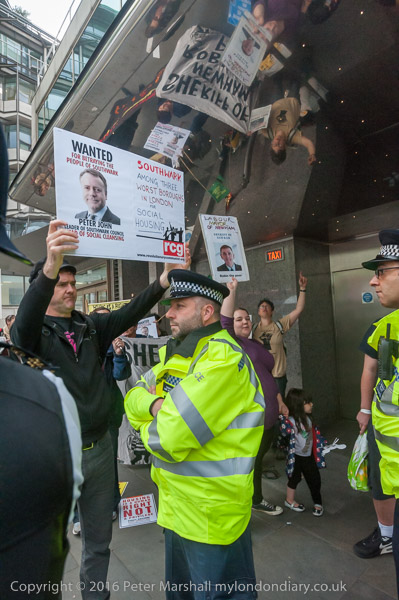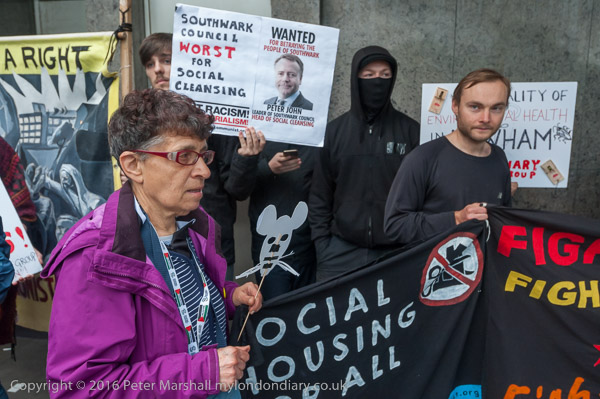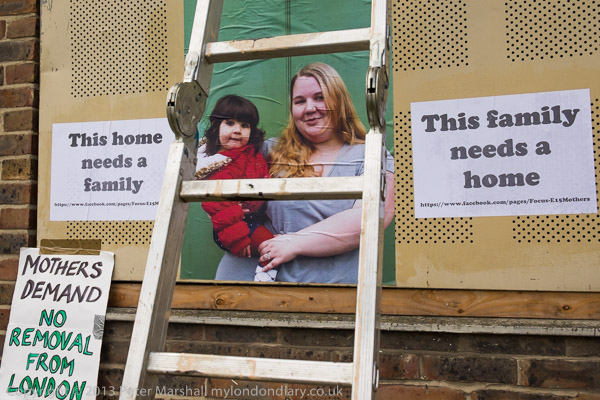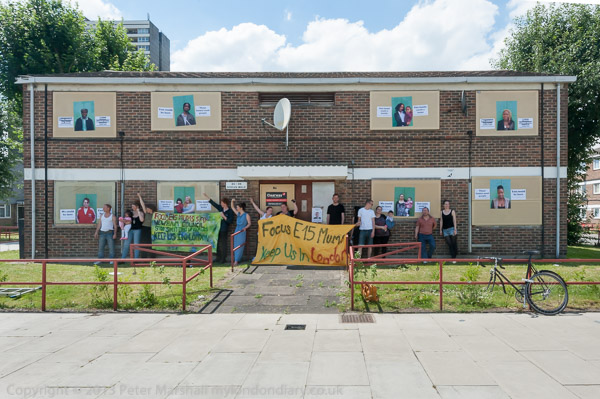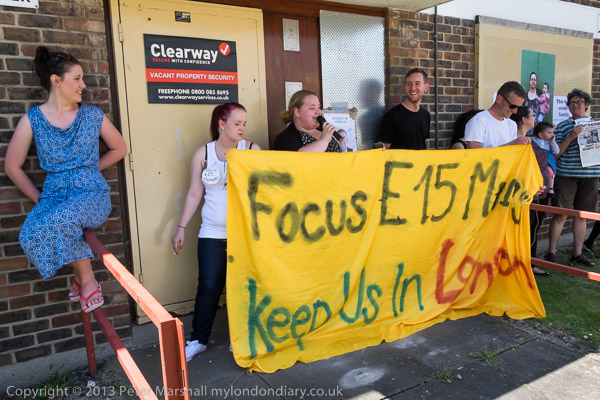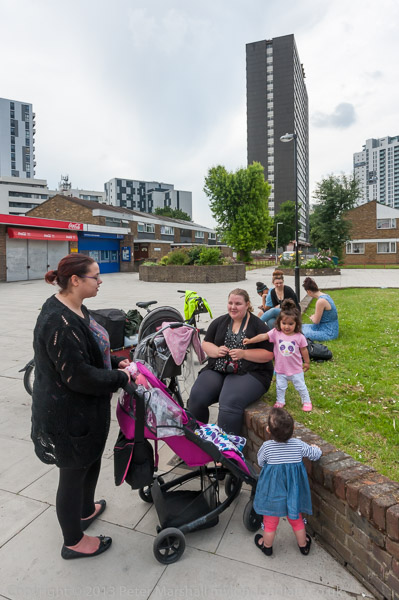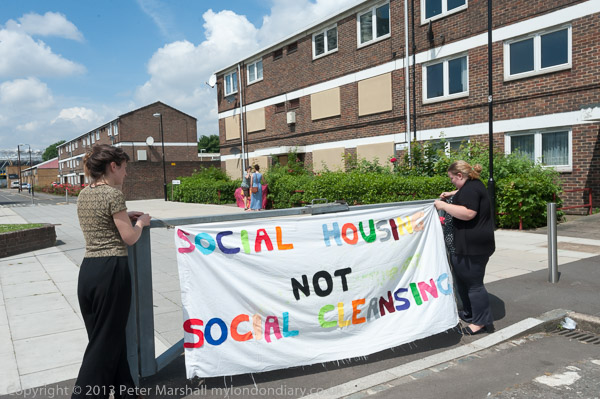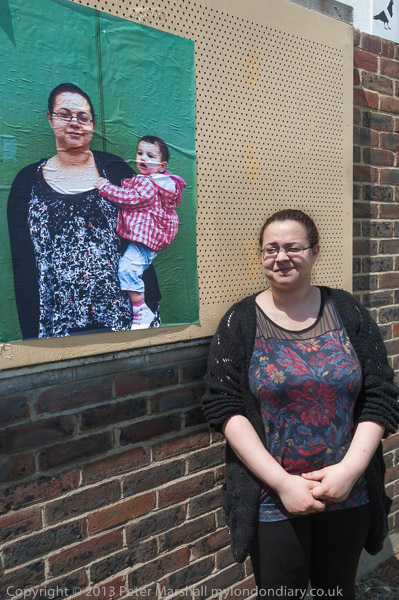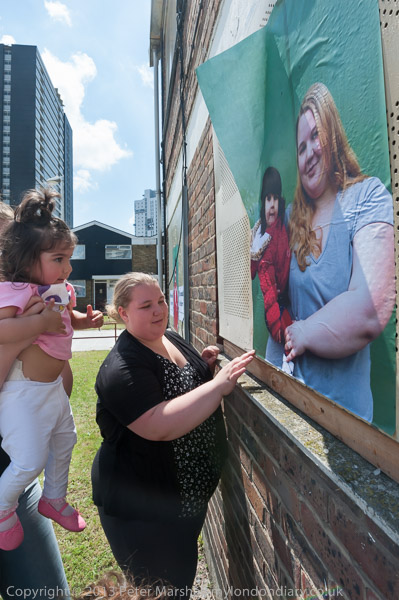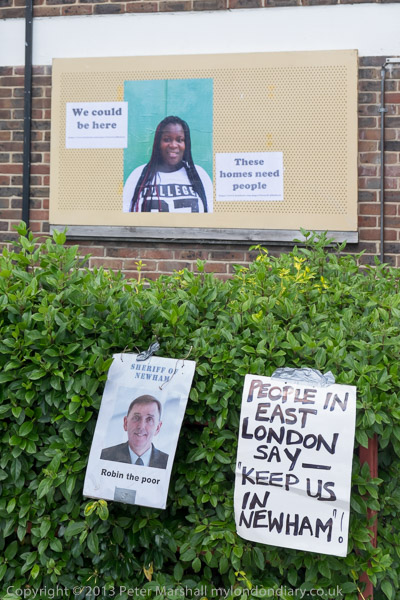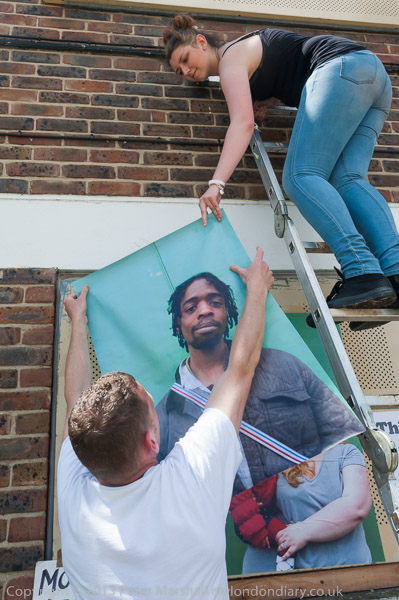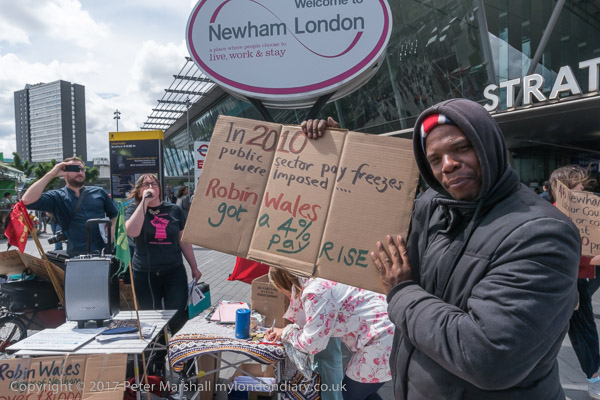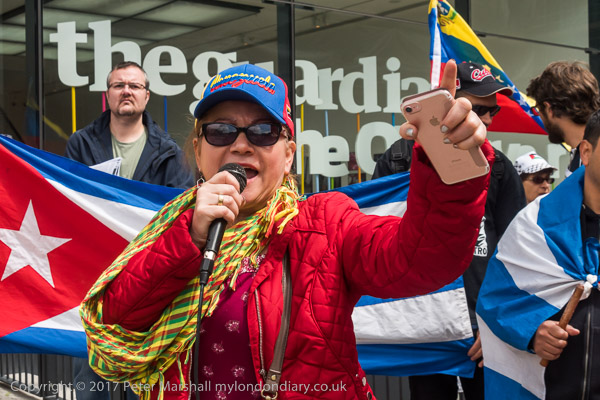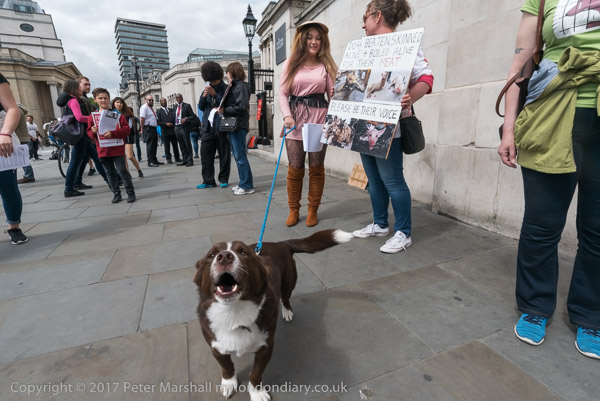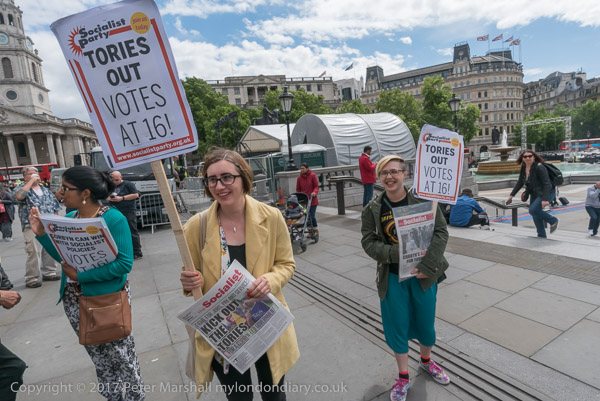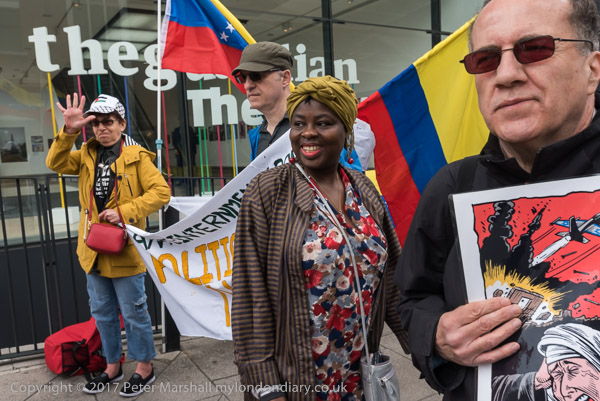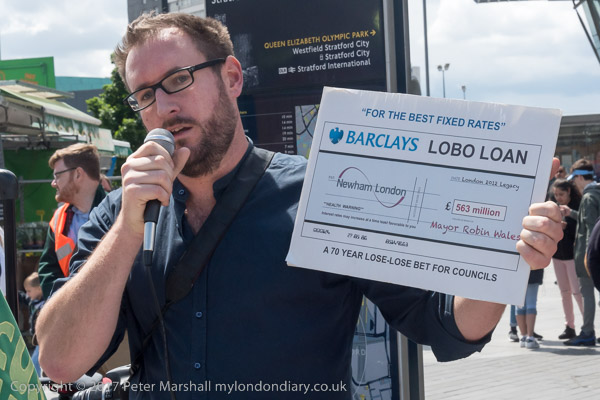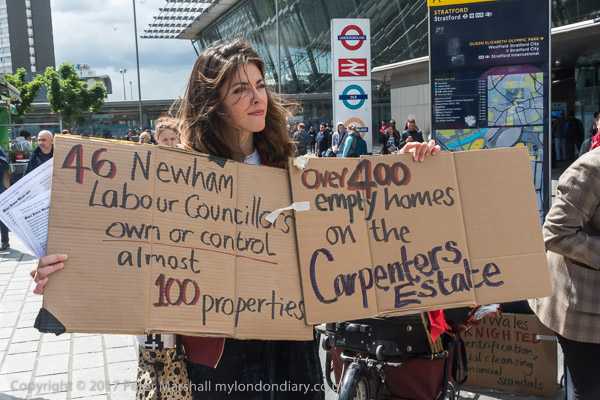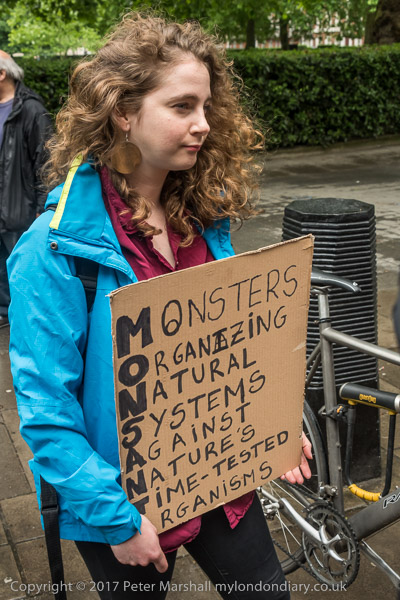Focus E15 Mums at City Hall 2014. Focus E15 mothers and children, threatened with eviction from the Mother and Baby Unit at the Focus E15 hostel in Stratford came on a decorated bus to City Hall, holding a party outside and trying to hand in a petition and card to then city Mayor Boris Johnson.
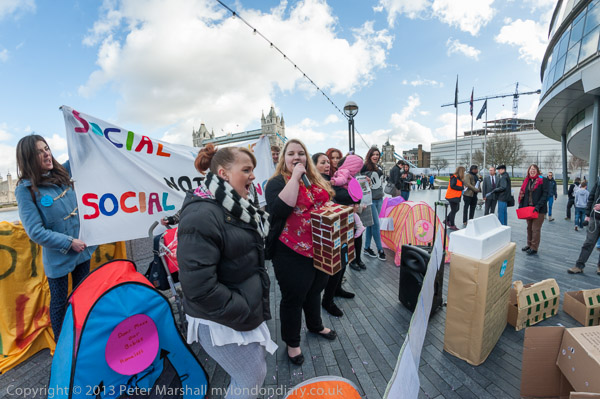
I’d met the Focus E15 Mums the previous month when they partied inside the Stratford offices of East Thames Housing Association who run the hostel, but the eviction notices had come in October 2013 because Newham Council had decided to cut the funding for the hostel.
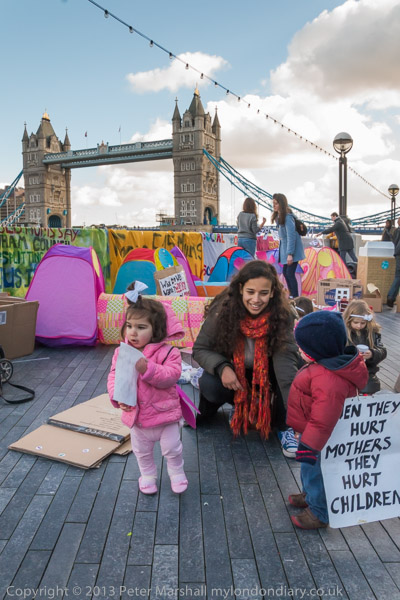
Newham was then at the centre of a post-Olympic housing boom, with both private developers and East Thames building large blocks of flats around the area. But the great majority of these are for sale or rent at market prices, and many were being bought not to live in but by overseas investors keen to cash in on the steeply rising prices of housing in London. Even housing associations build mainly for those on good salaries who can afford shared ownership schemes, with minimal homes at council-level rents.
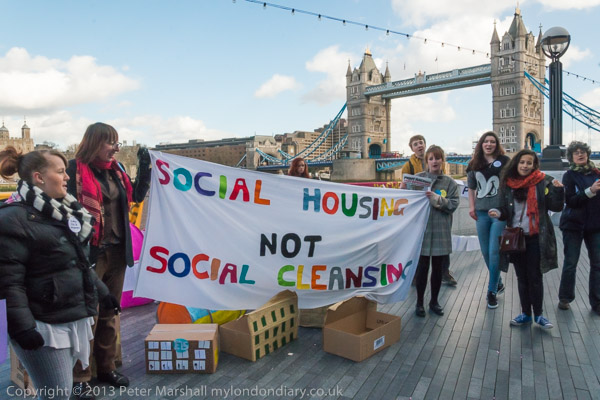
Newham Council Mayor Robin Wales told the mothers there were no properties available in the area at council rents. He made it clear than if you are poor, Newham doesn’t want you, and they were offered rented accommodation far outside of London, in Birmingham, Manchester, Hastings and even Wales – “expensive, sometimes poor quality, insecure one year private rents” – with the threat that anyone who turned down the offers would be regarded as having made themselves intentionally homeless and get no help from the council.
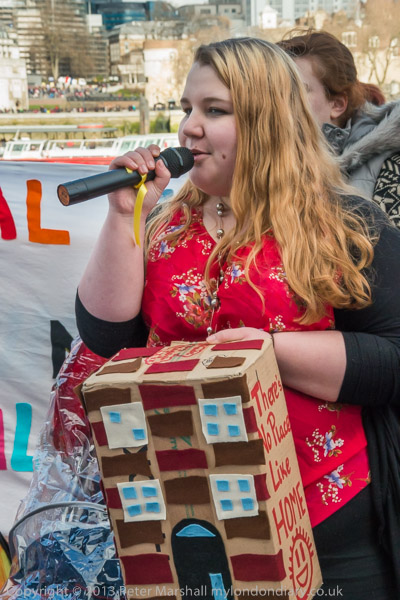
The mothers in the hostel decided to stand together and fight the council, demanding they be placed within suitable socially rented accommodation in Newham. Among other areas they point out that there is good quality council-owned housing on the Carpenters Estate, a short walk from their hostel, which Newham council have left empty, in some cases for ten years, as they try to sell off the area for development – despite having the highest waiting list for social housing in London.
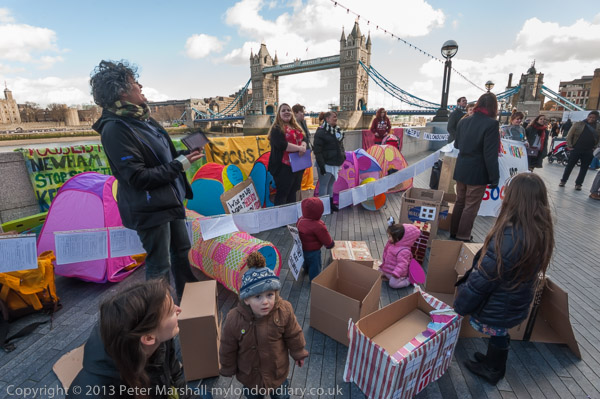
As I wrote in 2014, London Mayor Boris Johnson Boris Johnson “has made it clear that he is opposed to the gentrification of London, stating: ‘The last thing we want to have in our city is a situation such as Paris where the less well-off are pushed out to the suburbs’ and promising ‘I’ll emphatically resist any attempt to recreate a London where the rich and poor cannot live together…’ But these turned out to be typically Johnsonian empty words and during his time as London Mayor he did nothing to help those in housing need and stop those cleared from council estates having to move miles further out.

On the day of the protest the mothers tried to deliver a card to him, but his office simply refused to take it. The assistant director of the affordable homes programme in London, Jamie Ratcliff did come down to meet them and took their petition, but had little to say to them, giving them his card and telling them to email him.
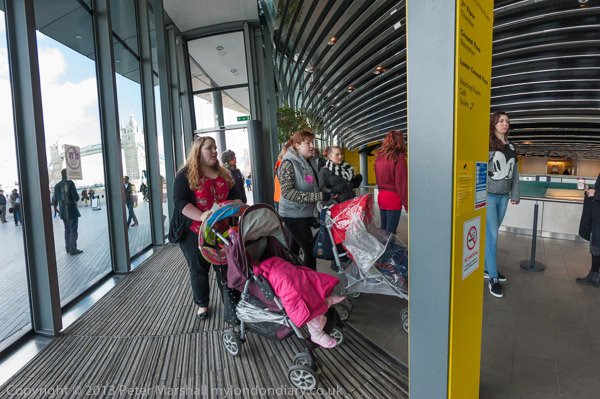
More on the event on My London Diary at Focus E15 Mums at City Hall.
The Focus E15 Campaign eventually got all or most of the mothers and children rehoused locally, and they continue to compaign in Newham for Fair Housing For All, holding a street stall despite harassment from council and police every Saturday on Stratford Broadway, helping homeless families get proper treatment from the council, protesting for those in terrible conditions in temporary accomodation and stopping evictions, and taking part in protests and campaigns for social housing in London and elsewhere.
